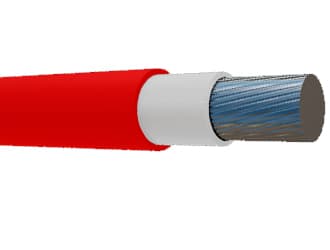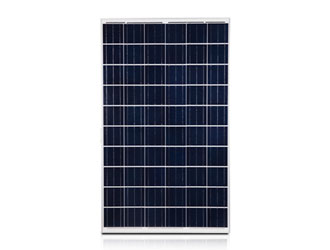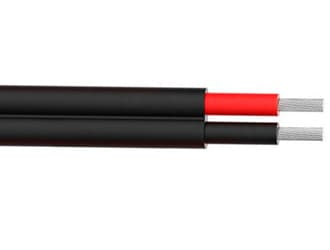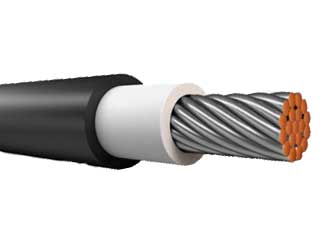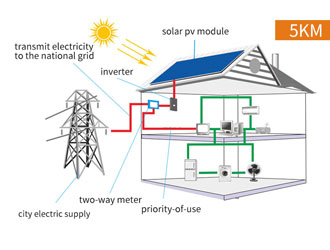H1Z2Z2-K Cable
Our photovoltaic (PV) cables are intended for interconnecting power supplies within renewable energy photovoltaic systems. They are manufactured in accordance with European Standard EN 50618 and with the harmonised designation H1Z2Z2-K. This standard supersedes the previous TÜV approved PV1-F cable. As with the TÜV PV1-F cable, the EN50618 cable benefits from a double-insulation offering increased safety. The Low Smoke Zero Halogen (LSZH) insulation and sheathing make them suitable for use in environments where corrosive smoke would present a risk to human life in the event of a fire.These Solar DC Cable are specified cables for use in Photovoltaic (PV) systems, and in particular those for installation at the Direct Current (DC) side. They are suitable for fixed installations, both internal and external, and within conduits or systems. Their robust sheathing and impact testing means they are designated suitable for direct burial. EN 50618 requires cables to be low smoke zero halogens and be flexible tin-coated copper conductors with a single core and cross-linked insulation and sheath.
The compounds used in the insulation and outer sheathing are halogen-free cross-linked, hence the reference to these cables as "cross-linked solar power cables". The EN50618 standard sheathing has a thicker wall than the PV1-F cable version. The cable sheathing is rated AD8 Water Resistant. With a nominal DC voltage of up to 1.5kV between conductors, and not exceeding 1800V between conductor and earth, these cables are required to be tested at a voltage of 11kV AC 50Hz. They have an operating temperature range of -40℃ to +90℃. These PV cables are ozone-resistant according to BS EN 50396, UV-resistant according to HD605/A1, and tested for durability according to EN 60216.
Construction Table
| PHOTOVOLTAIC PV H1Z2Z2-K CABLE | |
| VOLTAGE | AC: 0.6/1kV DC: 900/1800V |
| CONDUCTOR | Class 5 Flexible Stranded Tinned Copper |
| INSULATION | Halogen-Free Cross-Linked Compound |
| OUTER SHEATH | Halogen-Free Cross-Linked, Flame Retardant Compound |
Solar PV Energy Cable -TÜV 2PfG 1169/08.2007, H1Z2Z2-K. BS EN 50618 - 1.5mm² to 240mm² - Dimensions
| Reference | Conductor Size(mm2) | No Of Cores | Stranding(mm) | Overall Diameter(mm) | Weight(Kg/Km) |
| 1X1/5 | 1.5 | 1 | 29/0.25 | 4.9 | 40 |
| 1X2/5 | 2.5 | 1 | 48/0.25 | 5.35 | 49 |
| 1X4 | 4 | 1 | 48/0.30 | 6 | 66 |
| 1X6 | 6 | 1 | 72/0.30 | 6.15 | 86 |
| 1X10 | 10 | 1 | 126/0.3 | 7.6 | 132 |
| 1X16 | 16 | 1 | 116/0.4 | 8.6 | 188 |
| 1X25 | 25 | 1 | 180/0.4 | 10.8 | 294 |
| 1X35 | 35 | 1 | 260/0.4 | 11.9 | 390 |
| 1X50 | 50 | 1 | 396/0.40 | 14 | 540 |
| 1X70 | 70 | 1 | 360/0.50 | 16.1 | 740 |
| 1X95 | 95 | 1 | 475/0.50 | 17.5 | 965 |
| 1X120 | 120 | 1 | 608/0.50 | 19.5 | 1210 |
| 1X150 | 150 | 1 | 756/0.50 | 21.8 | 1495 |
| 1X185 | 185 | 1 | 925/0.50 | 25 | 1885 |
| 1X240 | 240 | 1 | 1221/0.50 | 27.6 | 2395 |
Please refer to the datasheet or speak to our technical team for more advice.

